What Are Penny Clicks and How Do You Get Them?
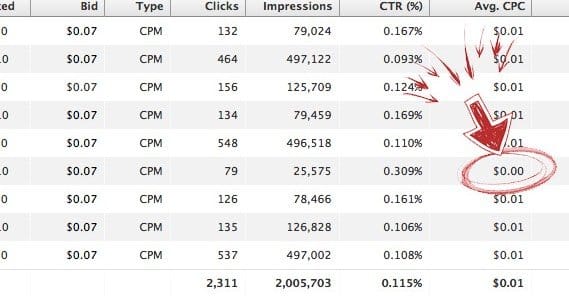
In the pursuit of cheap advertising, there’s only one thing that can beat penny clicks, and that’s completely free advertising. Now, you’re pretty unlikely to get truly free advertising. Any actual ads network will require some minimal amount of payment if you want to use it. Free sources of advertising are things like organic posting on social media, word of mouth advocacy from brand allies, and news coverage in industry journals. While good, they aren’t quite what we’re talking about.
Penny clicks are an artifact of pay per click advertising. The entire business model is easy to simplify; you want people to click through to your website, so you pay them. Clicks have an inherent value based on a number of different factors, which combine to make the cost of each click. The cheapest possible payment per click is a single cent, a penny. Thus, the cheapest possible way to use PPC advertising is with penny clicks.
In order to understand how to get penny clicks, you need to understand the factors that go into calculating the price of the clicks in the first place.
The Ad Network
Your first choice when working with PPC is the ad network you want to use. Google is one of the big ones, obviously. Facebook’s ads are another, though they’re much more robust than simple PPC. There are also hundreds of others. Of course, you don’t need one giant list, you need something more specific, so how about this list of the cheapest quality networks around?
Your choice of ad network matters because, to get cheaper costs, you need ad networks that have publishers willing to accept lower rates. If you’re only paying a penny per click, how much do you think the publisher is making, after the cut from the network? Not much, right? It might take them 3-5 clicks to earn that penny.
Choice of Keyword
Keyword is the central pillar, the core choice of your marketing via PPC. Each keyword will have its own audience, its own search volume, and its own estimated costs. If you pick a high traffic, high competition keyword, you’re going to have a lot of people bidding for visibility in the search or in the display network for that keyword.
In order to lower the cost of your clicks in the realm of keywords, you need to adjust the keywords you’re targeting. Specifically, you want to find keywords with lower competition. Of course, in this world of dramatically effective keyword research, that generally means targeting fringe, low-volume long-tail keyword queries.
Actual Bid Cap
Every PPC network allows you to choose the maximum amount of money you’re willing to put in to bid on a keyword. Generally, they will accept as many bidders as want to bid, but they only have space to display the top three, or five, or ten, or what have you. If there are more bidders, the lower bidders won’t get display time, and the mid-range bidders will tend to get low amounts of display time compared to the top bidders.
If you want penny clicks, you’re probably going to want to set your maximum bid very low, possibly even at that penny if the ad network will allow you to. Many ad networks have semi-reasonable minimums, however. Most ad networks also have a system of maximum CPC bids that will use as much as it needs to top out the bidder list, but no more. If someone is bidding $1 per click and you set a maximum bid of $5, you’ll end up spending $1.01 per click. If someone else comes along and bids $4, your bid will increase to $4.01 to keep you on top.
Account Quality Score
Quality score is a metric that measures how relevant your landing page is to your ad, how high your click through rate is for your ads, and has an effect on the positioning of your ads. It’s generally a factor for high tier ad networks like Google and Facebook, though, and is not much of a concern for smaller ad networks like the ones listed above.
Quality score is tricky to balance, because if it’s too low, your costs will go up, much like the way a bad driver’s insurance premiums rise. Conversely, if it’s too high, it’s high because you’ve been spending more money on great ads, which is in opposition to the goal of penny clicks.
Keyword Competition
I touched on this earlier, but competition will have a big effect on the cost of keywords. Imagine that there are five slots in which ads can be shown at any given time. These slots go to the five highest bidders. If you bid one cent, you’ll be right up there at the top of the list as long as no one else bids. If someone comes along and bids 20 cents, you’re knocked down to position two. If a third person comes along and bids 14 cents, you’re dropped to position three. If a fourth person enters and bids $1, you drop to position four, and so on. By the time he sixth person enters the fray, you’re bumped off the list.
You have one recourse when it comes to competition, and that’s finding keywords that don’t have the competition at all. The more competition there is, the harder it is for you to get away with cheaper clicks.
Search Seasonality
Some keywords and some industries flare up at certain times of the year and die back down throughout the rest of it. This can both help and hurt you in your quest for penny clicks. For example, very few businesses are going to be buying up Christmas-related keywords during June, July, and August. They might start in late September, and be done by January, generally. During the off season, you can often target these prime keywords for a relatively cheap price.
On the other hand, it’s difficult to actually utilize these keywords. Very few people bid on seasonal keywords during the off season because very few people are searching for them. You have all of the problems of both low volume keywords and high competition keywords. During the on season, you can’t compete with penny clicks, you have to spend more, often quite a bit more. During the off season, you’re not getting much in the way of returns at all.
Audience Relevance
This is one of your big factors, but interestingly it only comes into play when you’re running your ads on an ad network with detailed and granular targeting. If you’re running on an ad network that doesn’t let you pick anything other than, at most, keyword and country, you won’t be able to fine tune your audience targeting such that you get ultra-cheap clicks.
For something like Google or Facebook, where you can choose a lot of different demographic options, you have more flexibility. The trick is to find the intersection between a cheap audience and an audience that will click through and ultimately buy your product in a way that makes you money.
For example, if you’re selling mid-tier fashion shoes, you might want to target a narrow audience of middle-aged females, right? Most other demographics aren’t going to be interested in designer shoes. Your costs will go down as you target a broader audience – all females, or males and females, for example. Of course, this means your volume will have to go up to get the same number of conversions. It’s essentially the opposite of conversion rate optimization. You can get cheaper clicks, but your conversion rates go down, so you need more incoming people. Ideally, the cost reduction will outweight the volume increase and you will still turn a profit.
Audience Geolocation
Possibly the biggest factor in getting penny clicks is a subdivision of audience targeting, which is geographic targeting for your audience. American audiences tend to be among the most expensive. Other English-speaking countries, like the UK, Australia, and Canada tend to be a little less expensive. Things get cheaper yet when you go to other non-English countries in Europe or around the world. South American countries are even cheaper, as are Eastern European. Middle Eastern and many African countries tend to be the cheapest, for many reasons, typically due to the economies of the areas.
By targeting audiences other than the top most expensive demographics, you can get cheaper clicks. That’s why when you buy a lot of traffic, you’ll see a lot of it coming from places like India; it’s cheaper to buy that traffic regardless of method.
Why Penny Clicks Hurt
Let’s go through the entire list above and talk about why contorting those factors for cheaper costs is going to hurt you.
The ad network choice hurts you because, well, what sort of publishers are going to go with a cheap network over an expensive one? If you’re running a site, you want to be making as much money as you can. You’d rather go with Google’s ads than you would an ultra-cheap pennies-per-thousand-clicks network. The kind of sites willing to accept that little money are probably thin affiliate sites or scraper spam blogs. Not the kinds of places where you’re going to find good users.
The keyword choice hurts you because, obviously enough, the lower the volume the keywords, the less traffic you’re going to get from them. Fringe keywords are often much harder to get any reasonable returns from, unless they happen to match your niche exactly. In those cases it can work out, but those are necessarily rare, since only a few will fit you. This also determines your competition, covering that point above as well.
The bid cap choice can completely take you out of the running. Setting a per-click bid cap of one cent means that anyone who wants to bid anything at all can out bid you, which lowers your position in the display and can bump you out of rotation entirely. It would be very easy to have a competitor step in and destroy your marketing for a very low cost.
The seasonality choice comes back to keyword choice, but I covered the biggest problem above. You lose on both ends of the deal, and you’ll be pretty unlikely to actually get penny clicks for seasonal keywords, even on the off season.
The audience relevance choice hurts you because, as I mentioned, it’s kind of the opposite of conversion rate optimization. I say that ideally your penny clicks will allow you to get the volume you need without demolishing your sales numbers and your profit, but that is very rarely going to be the case. It’s almost always better to focus on the opposite, that is, on getting a better audience. Sure, you might be paying 100 times more for your clicks, but you’ll be getting 1,000x better conversion rates.
The audience geographic location choice is most harmful for one reason; who among that audience is capable of buying your product? Not many people, I would venture to guess. Even if you’re selling software that can be purchased and run by people in India, are they going to buy it? Even if it’s incredibly valuable to them, and your price point is a cheap $50, you have to remember; the average daily wage in India in 2014 was a mere $4 USD (272 INR). It’s going to be the same story just about everywhere you try to get ultra-cheap traffic. The cost of living and the wages are so low that even a cheap product from America is an expensive luxury.
So, yes, you can get penny clicks. All you have to do is sacrifice any pretense of successful advertising, audience targeting, competition, or profits. You’ll get a lot of people clicking your ads, sure. You’ll get a lot of faces looking at your website. That’s pretty much all they’ll do, though. They won’t buy anything you sell, unless you happen to be targeted at those markets, which is pretty unlikely.

 ContentPowered.com
ContentPowered.com
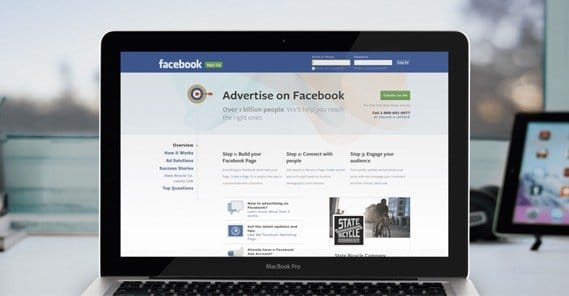

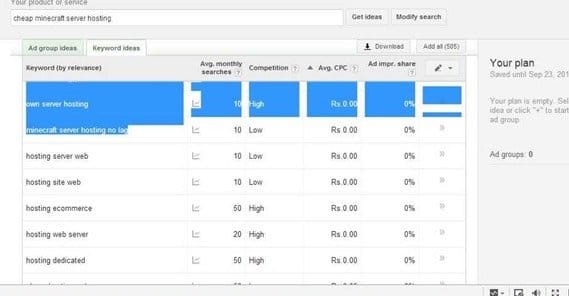






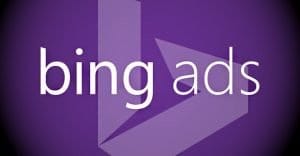
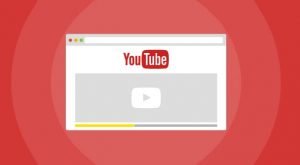
San Diego Doc
says:Hi Kenny, you mention “They won’t buy anything you sell, unless you happen to be targeted at those markets, which is pretty unlikely.” What does this mean?
george christoforou
says:You can get low cpc .02p by searching for high volume low competition keywords in keyword planner. Then capping your ad at .02p. It will work but you may not appear on page one and you will get traffic from countries such as Angola or somewhere where there is not much competition. Just filter out all the countries you don’t want to get traffic from. And you should get some traffic. Google with time will suggest other keywords. Add them to your account and you will get more traffic. Also add long tail keywords around your ads to get more low cpc traffic Dont take my word for it. Play with it and see